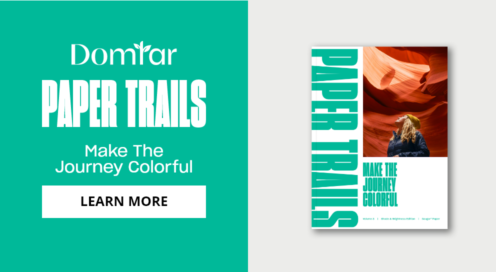Incorporating Indigenous worldviews into the classroom
Written by Fe Wyma RGD, NVision Insight Group
This article helps educators better understand what’s available within the resource: Maamwi Hub and how it can be used to incorporate Indigenous worldviews into the classroom.
Every graphic designer understands that design is a powerful way to tell stories and express cultural identity. Through our work, designers have the power to shape narratives and influence perceptions. Armed with this knowledge many design educators in Canada now strive to integrate more Indigenous culture and knowledge into their learning environments to better support the Truth and Reconciliation Commission of Canada: Calls to Action.
Doing so could help strengthen the community of emerging designers who choose to practice their profession in a manner that respects Indigenous perspectives, seeks ethical representation, acknowledges the negative impacts of colonization and is aware of the marginalization experienced by Indigenous peoples. This is no easy task. It can be challenging to find resources that support this action… and this is exactly why the Maamwi Hub was created.
Learning “Together”
The Maamwi Hub is an open learning portal published on the Learning Portal from College Libraries Ontario. Its goal is to “deepen understanding and appreciation of Indigenous cultures and histories” (Maamwi, 2023). The Maamwi Hub was launched in June 2023 through a collaboration between Ontario College’s Indigenous Peoples Education Circle and College Libraries Ontario. Maamwi means “together" in Anishinaabemowin (the Ojibway language), a concept that captures the spirit of collaboration and inclusivity with which this portal was created.
Maamwi Hub’s 5 Sections
The Maamwi Hub offers practical tools and tutorials for graphic design instructors and students. Visitors can explore five main sections:
- About: Information on the Maamwi Hub project background, its collaborators and timeline.
- Discover: Resources on Indigenous history and culture.
- Inquire: Guidelines for conducting respectful research are provided in this area.
- Inspire: Tools for curriculum development and classroom activities are housed in this section.
- Empower: Information on engaging further with Truth and Reconciliation and provides links to organizations that motivated visitors might wish to connect with.

Inside the Sections
Each section provides ideas and concepts that may help bridge cultural gaps and foster inclusive learning spaces. Visitors can learn more about Historic and Modern Treaties, Residential Schools, Truth and Reconciliation and the 94 Calls to Action. The Inquire tab is especially valuable to academics considering a collaboration or research project on Indigenous issues. It outlines cultural ceremonies, knowledge use, land acknowledgements and protocols for conducting research ethically and responsibly. The module on Indigenous Pedagogy promotes a holistic and inclusive learning environment through methods like two-eyed seeing, storytelling and intergenerational learning. You can also find suggestions for specific classroom strategies and activities here. For those interested in going further with their reconciliation efforts, the Empower section offers information on the appropriate usage of terms related to Indigenous Peoples, lists days of significance and provides links to organizations where one can get more involved.
The Hub provides training modules, videos and external resources to deepen understanding of Indigenous issues. These learning experiences cater to various learning styles, making the information engaging and accessible. Graphic design students might be especially interested in reading about how the Hub’s Indigenous multimedia developer, Tamara Gagnon, created the logo and icons based on her lived experiences.
Other Resources
Though the Maamwi Hub was created for the 24 Ontario Colleges, it is an open learning resource offering relevant information for academics across the country. However, several online platforms offer free tools and resources for educators seeking to integrate Indigenous perspectives into their teaching practice. Similar learning portals from other provinces and territories include:
- iPortal: This portal was developed in 2006 at the University of Saskatchewan and links several digital Indigenous learning resources. It helped influence the Maamwi Hub.
- Indigenous Canada (University of Alberta): This open online course provides a comprehensive overview of Indigenous histories, cultures and contemporary issues. It's a valuable resource for educators looking to enrich their curriculum with Indigenous content.
- Indspire: As a national Indigenous-led charity, Indspire offers resources such as lesson plans, educational videosand scholarship opportunities for Indigenous students.
By exploring these and other resources alongside the Maamwi Hub, educators can deepen their understanding of Indigenous cultures and histories and effectively integrate Indigenous content into their classrooms.
Cultural Competence in the Classroom
Graphic design students need to recognize the importance of cultural sensitivity and representation to create respectful and meaningful visual communications, especially in a diverse and multicultural country like Canada. Educators can foster an environment that nurtures this competency by integrating Indigenous perspectives, histories and visual storytelling traditions into the curriculum.
By decolonizing our curriculum, we prepare students to enter the workforce as designers who seek to collaborate with Indigenous communities and who are prepared to navigate issues surrounding consent, cultural authenticity and accurate and respectful representation. Through initiatives like the Maamwi Hub, educators pave the way for a more inclusive future in graphic design that celebrates the resilience and wisdom of Indigenous cultures.

Fe Wyma RGD
NVision Insight Group
Fe Wyma is the Senior Consultant of Communications and Creative Services at NVision Insight Group and the founder, principal designer, and restless spirit of Kapwa Communications. For more than 20 years, she’s provided visual communications, branding, and corporate training services to both the public and private sectors from coast to coast to coast. Fe is also a graphic design educator who shares her love of layout and typography with emerging designers and strives to help them set a strong foundation for a fulfilling design practice. Fe’s own professional practice is guided by the belief that design can affect positive change in the community through responsible, creative practices.
Tags
Related Articles


Dean Mitchell RGD










